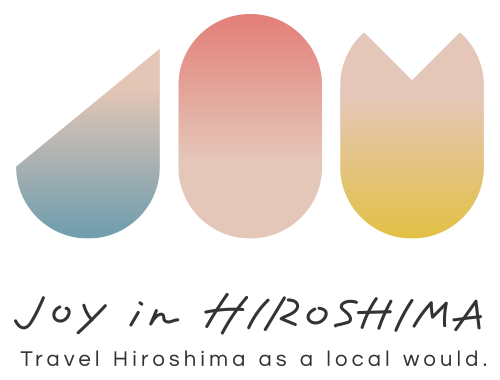100 Stories
Sushi, Noodles, and Meat: How to Eat Out in Japan
Food Paradise
Japan is a culinary dream for foodies from around the world. Many people come to this country for the views of nature, the experience of the culture, and of course the food. There are so many varieties and choices of food here that it can overwhelm the mind and taste buds of even a serious food lover. You can have most any type of food in Japan from sushi and ramen, burgers and fries, to a wide swath of world wide, ethnic food from many different countries. Of course food tastes will vary by person, and all will have many different likes and dislikes for their palettes. Thus, with so many choices for food here, you must seek out and discover all that this food mecca has to offer, that will provide the best experience for your culinary tastes. Eating in Japan (with so much variety and many tasty choices) can be quite the pleasurable experience no matter what you like to eat!
SInce the food offerings in Japan appear to be endless, I will attempt to select some simple but decidedly Japanese eating establishments in the Hiroshima area; the choices I offer will hopefully appeal to most if not all in their desires to experience the variety and basic quality that Japan has to offer in the way of satiating your appetite.
Here I would like to highlight some of the readily available and delicious Japanese meal options that the country has to offer. I will do my best to offer a nice variety of food samples and restaurants that provide these foods, and by focusing only on basic, quick-serve, fast-food style restaurants that are simply everywhere in Hiroshima – as well as all over the country. Sushi, noodles, and meat (beef, chicken, and pork) will be the main focus for the foods of this article. For the sushi I will concentrate on conveyor belt style sushi called kaitenzushi; for the noodles I will use quick-style ramen and udon shops; and for the meat I will focus on grilled meat (yakiniku), breaded, deep-fried pork cutlet (tonkatsu), and grilled chicken on a stick (yakitori).
Of course, there are so many food choices here with both low and high end in price and quality; but I will basically stick with reasonably priced and ubiquitous and tasty dishes (at least in my humble opinion) such as sushi, noodles, and meat.
I will not dare to venture too into the broad food arena of Japan, since it would likely encompass a long book form to present any type of complete look at the plethora of food offered here. Thus, I will only offer basic, fast-food style, everyday meals that everybody in Japan already knows, and that can offer a tasty and quality meal for a reasonable price to all diners!
Sushi
First up is sushi. This Japanese food invention usually consists of vinegared rice with raw fish, vegetables or meat on top of the rice, and wrapped in seaweed (nori); or also the same ingredients in a roll form (makizushi). All of this is enjoyed with soy sauce with optional horseradish-style (wasabi) used for dipping or mixed into the sushi to add to the flavor.
The list of conveyor belt (kaitenzushi) type sushi restaurants is seemingly endless. Thus, I would like to show a few of the kaitenzushi restaurants (japan-guide.com at https://www.japan-guide.com/e/e2036_kaitenzushi.html ) that I personally enjoy that will hopefully help to explain what conveyor belt sushi has to offer (and how the system works) that are available in the Hiroshima area.
My first choice is Nonta Sushi (website in English at http://fujima-g.jp/nonta). The easiest one to find in the city limits is near the Peace Memorial , about a 5-minute walk to the restaurant (see link restaurant link for directions and information). The restaurant has an English menu and you can order straight from your seat from a computer complete with photos of what you want to order (you will only deal with staff upon entering, paying at the counter, and leaving the store). Once the order is placed, the food comes directly to your table/booth and stops right in front of you. You pick it up off the conveyor belt, put it on your table, and enjoy the delectable choice you have made! It is quite simple and very convenient. Free green tea (ocha)is available at the table where you sit in powder form which you mix with hot water (also available at the table); you can drink as much as you want. You can also order pickled ginger or gari for the table at no charge.
Next I recommend Hamazushi located in Ujinanish near Hiroshima Cosmopolitan University (website in English at https://maps.hama-sushi.co.jp/jp/detail/4535.html). The dining experience is basically the same as at Nonta with a conveyor belt-style system that delivers the food directly to your seat once you order. The menu is in both English and Japanese. Unlimited green tea and pickled ginger are also available free of charge if you so desire. As with most conveyor belt sushi places, this restaurant is built on convenience. It aims to please the diner in most every and all ways possible!
My third choice for conveyor belt sushi is Sushi Tatsu, which is located on the first floor of Hiroshima Station at the north exit; very convenient if you go by train to visit. (website at https://r.gnavi.co.jp/rzn4axzm0000/review/) They offer the same amenities as Nonta and Hamazushi with electronic ordering in English. This place caters to travelers, shoppers, and of course foreigners, since many people pass through Hiroshima Station every day. I believe that the sushi selection is quite varied and tasty, with something for everyone who wants to sample their goods!
I have visited all three recommended sushi shops and none have ever disappointed me.
If you have a desire to experience sushi in Japan, any of these places will definitely be a good place to start!
Noodles (Udon and Soba)
There are various types of noodle dishes in Japan, but the three most common are soba – made from buckwheat flour and can be served hot (in a soup or broth) or cold (with a dipping sauce); udon – made from buckwheat and also served either hot or cold in a soup style; and ramen, which I will give its own category below. You can also grill or fry the (soba/udon/ramen) noodles with various vegetables to create a delicious meal on its own.
My first choice for noodles is a chain udon store called Marukame Seimen or just Marukame (website at https://stores.marugame-seimen.com/111079). There are a few shops within the Hiroshima city limits. Most notable are at the Outlets Mall (https://stores.marugame-seimen.com/111079) and at YouMe Town (https://stores.marugame-seimen.com/110189) in the Minami Machi section of the city. The stores are set up as a deli/cafeteria style restaurant, where you enter, pick up your tray, order your meal off the menu, from the server or udon maker behind the counter, then put it on your tray, move down the line and add to your meal the variety of already cooked tempura on the trays in front of you, and then pay at the end of the line. The prices are very reasonable from about 400 yen for just a simple bowl of noodles (hot or cold), and each piece of tempura is about 100 yen additionally. I usually order the curry udon with 3 pieces of tempura, and the cost is about 800 yen. The only drawback for foreigners is that there is no English menu, so you must use some Japanese or just point and take your chances. It is very much worth the visit no matter what language you speak. The food is quite good!
Ramen
Ramen is originally a Chinese food invention that was imported here to Japan sometime in the 19th century, and became an economical food choice in the country due to its simplicity and it was easy to make for most (as well as instant ramen noodles which became popular in the mid 20th century in Japan. There is even a ramen museum in Yokohama, Kanagawa that offers period style stores with a close up view to what eating ramen was like in various periods in Japanese food history.
Ramen shops are plentiful all over Japan and Hiroshima is no exception. The competition is fierce for ramen and the types are many and wide. There are many varieties and types to choose from so I will just pick one that I enjoyed to introduce you to the pleasurable experience of eating these delicious, wheat-based noodles in soup. My choice is Ippudo which is located at the north end of Hiroshima Station. The food is tasty, location is easy to find, price is reasonable, and the menu is in English. Here is the website:
https://stores.ippudo.com/1048?utm_source=Yext&utm_medium=Yext&utm_campaign=Listings
For an additional option from just hot ramen in soup form, I would recognize Okkundou Mazemen Restaurant which offers both hot and cold noodles; both with soup and without soup meal choices. The food and restaurant experience is quite enjoyable, and it does not disappoint no matter what type of noodles you choose. The easiest way to get to the store is to walk about 3-4 minutes from the Hiroshima Peace Memorial Park. The menu and website are in English:
http://www.powerland.co.jp/index.htm
Yakitori
Grilled chicken on a stick called yakitori is next up. This is a very popular food that is available at street stalls as well as at special restaurants throughout the country and in Hiroshima. The store I recommend is located near Ebisu-Cho Station and called Toricho. The menu is in English and the website has plenty of details to describe what the restaurant has to offer. This is a place that I believe all would enjoy. You can find more information at: http://r.goope.jp/toricho.
Yakiniku
Yakiniku or grilled meat is a favorite food for many Japanese that offers the choice to cook the meal yourself at your table over an open grill fire. Pair this with a variety of vegetables and sauces, and you are setting up for a most enjoyable food experience. So for grilled meat I recommend GyuKaku (https://www.gyukaku.ne.jp/) which is reasonably priced, tasty, and presents a comfortable atmosphere. I have eaten at this restaurant many times, and I have never had a bad experience. The variety of meat (beef, chicken, and pork) and vegetable dishes is extensive, and the atmosphere and service are top notch. Also if meat is not your thing, there are some vegetable and noodle dishes offered as an alternative
Tonkatsu
Breaded pork or tonkatsu is such a delight to eat. Tonkatsu is quite prevalent all over Japan, and you can find these restaurants most anywhere, from mom and pop stores to large chain-style restaurants in and around train stations, in shopping malls, and in restaurant areas all over. There are many of these restaurants all over Hiroshima, but I recommend Wako (https://wako-group.co.jp/),at which I have eaten quite a few times. A tonkatsu meal usually consists of a plate with 5-6 pieces of breaded pork, a healthy portion of rice and cabbage (both typically are offered with unlimited refills), along with miso soup and pickled vegetables (tsukemono). This is a popular dish among both Japanese and foreigners. It offers generous portions, is reasonably priced, and generally very tasty to all who have tried it. This is one of my favorite meals.
Moment of Joy
Food tasting is a simple pleasure that is quite subjective for me along with most other people. But when I recently visited Marukame Seimen udon noodles, I ordered the curry udon with tempura on the side. I really enjoy curry, so with the noodles mixed in and the added tempura my eyes tell my mind and my mouth that this is something that I knew I would enjoy! The first bite of my food offered me a wonderful sensation of satisfaction that appealed to my taste buds, and registered in my mind as delicious and satisfying at the same time. I thoroughly enjoyed my most recent visit to eat curry udon at Marukame, and my expectations were not disappointed. Happiness or joy comes in many varieties, and udon is one of them. For me this typifies simple, culinary pleasure!
I am well aware that food preferences vary both inside (regional) and outside (ethnically) each individual country in the world. I would never pretend to tell anybody what is enjoyable since everybody has different food tastes. That being said though, I offer that Hiroshima has so many simple food pleasures that should be experienced at a reasonable price all over the city and beyond; so you should get out and about to experience what there is to offer and hopefully enjoy!
If you want to enjoy the food choices that Hiroshima and Japan in general has to offer, please check out some of the choices in this article, or research your own and pay them a visit. No matter what you like to eat, I am fairly certain that Hiroshima has something that you will like and enjoy, and that will appeal to your palette for an experience worth taking. Bon appetit!





